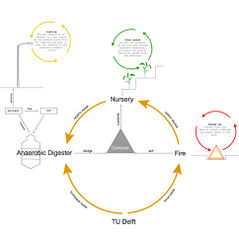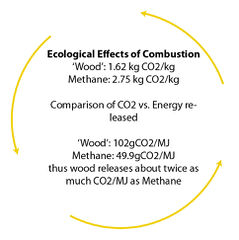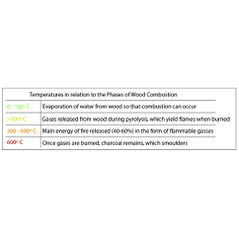project K:Research2
From student
(Difference between revisions)
(→PROCESS) |
(→Calculations) |
||
| (7 intermediate revisions by 2 users not shown) | |||
| Line 1: | Line 1: | ||
| + | <div style="float: left; width: 940px; "> | ||
<div style="float: left; width: 940px; "> | <div style="float: left; width: 940px; "> | ||
=<span style="color:orange">PROCESS</span>= | =<span style="color:orange">PROCESS</span>= | ||
<gallery widths="260" heights="240" perrow="3"> | <gallery widths="260" heights="240" perrow="3"> | ||
| − | File: | + | File:Dd5.jpg|Ecologic loop |
| − | File:Dd2.jpg| | + | File:Dd2.jpg|Ecological effects of combustion |
| − | File:Dd3.jpg| | + | File:Dd3.jpg|Temperature in relation to the phases of wood combustion |
</gallery> | </gallery> | ||
| + | ==<span style="color:orange">Calculations</span>== | ||
| − | </ | + | * Food waste has a higher solid content than municipal wastewater, meaning that it is a more efficient use of digerester volume aka the digester can be smaller. |
| + | |||
| + | |||
| + | |||
| + | * Peak methane production in a 15-day cycle, themophyllic digester was 10.8L/hr but averaged 4.8L/hr. | ||
| + | |||
| + | |||
| + | |||
| + | * 100 tons of “input” will create 30 tons of “output” for composting | ||
| + | |||
| + | |||
| + | |||
| + | * Biogas composition is about 67% methane (CH4), 33% CO2 - so heat capacity is 670 BTU/Ft3 burned. | ||
| + | |||
| + | |||
| + | |||
| + | * CH4 production rate (ft3/lb)= CH4% X Gas Production ( ft3/day) TS% X Feed (gal/day) X 8.34 lbs per gal | ||
| + | |||
| + | peak values near 8.5 ft3 CH4/ lb food waste. 5ft3/lb average. | ||
| + | |||
| + | 1 ft3 CH4 at 67% methane = 670 BTUs and 13,400 BTUs = 1 kWh. this value is better than coal ( 10, 500btu/kwh) | ||
| + | |||
| + | |||
| + | |||
| + | *av. of 2,300 ft3 per day/ 1,000 ft3 digester volume | ||
| + | range (in ft3/day) = (1,100–3,200) with these figures, 4.79 kw/h of energy are created daily in a 1000ft3 digester! thats enough to run 48 100-watt lightbulbs continuously. These figures are the optimal output based on the chemical energy of the gas, not the conversion into electric energy by burning. | ||
| + | |||
| + | 1000ft3= 28.3 cubic meters | ||
| + | |||
| + | ==<span style="color:orange">Digester</span>== | ||
| + | |||
| + | 1. There are certain minimum dimensions | ||
| + | |||
| + | 2. It needs constant teperature | ||
| + | |||
| + | 3. Position: above or below ground. | ||
| + | |||
| + | |||
| + | |||
| + | <div style="float: left; width: 900px; "> | ||
[[Project K:Home| Back to Home]] | [[Project K:Home| Back to Home]] | ||
</div> | </div> | ||
Latest revision as of 18:01, 30 November 2011
PROCESS
Calculations
- Food waste has a higher solid content than municipal wastewater, meaning that it is a more efficient use of digerester volume aka the digester can be smaller.
- Peak methane production in a 15-day cycle, themophyllic digester was 10.8L/hr but averaged 4.8L/hr.
- 100 tons of “input” will create 30 tons of “output” for composting
- Biogas composition is about 67% methane (CH4), 33% CO2 - so heat capacity is 670 BTU/Ft3 burned.
- CH4 production rate (ft3/lb)= CH4% X Gas Production ( ft3/day) TS% X Feed (gal/day) X 8.34 lbs per gal
peak values near 8.5 ft3 CH4/ lb food waste. 5ft3/lb average.
1 ft3 CH4 at 67% methane = 670 BTUs and 13,400 BTUs = 1 kWh. this value is better than coal ( 10, 500btu/kwh)
- av. of 2,300 ft3 per day/ 1,000 ft3 digester volume
range (in ft3/day) = (1,100–3,200) with these figures, 4.79 kw/h of energy are created daily in a 1000ft3 digester! thats enough to run 48 100-watt lightbulbs continuously. These figures are the optimal output based on the chemical energy of the gas, not the conversion into electric energy by burning.
1000ft3= 28.3 cubic meters
Digester
1. There are certain minimum dimensions
2. It needs constant teperature
3. Position: above or below ground.


